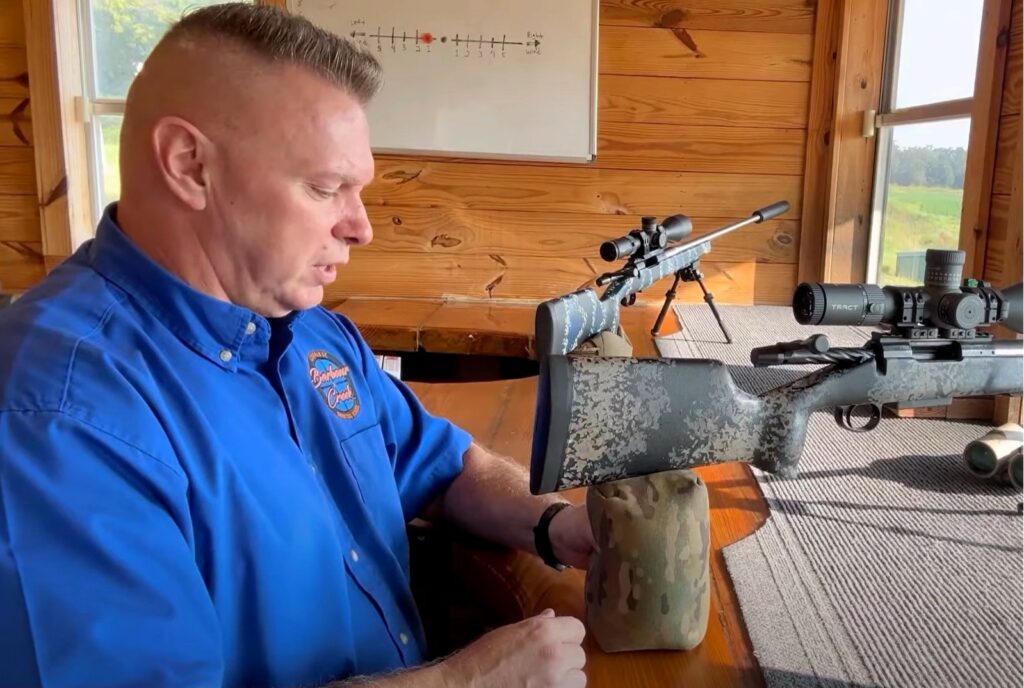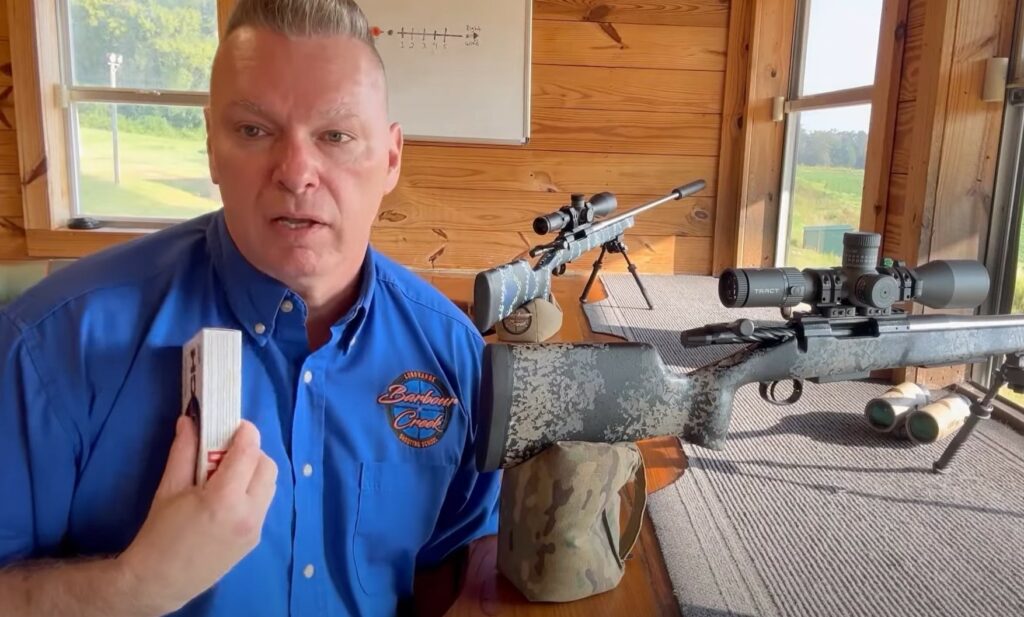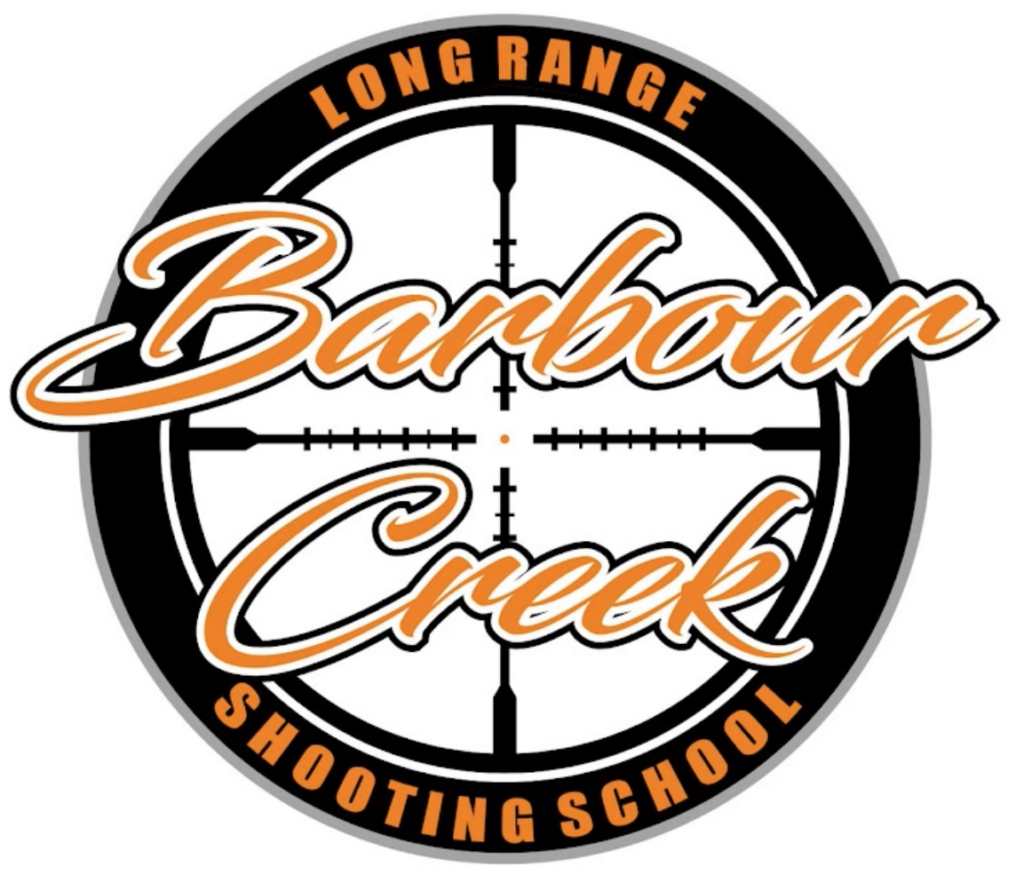Our friend James Eagleman of the Barbour Creek Long Range Hunting & Shooting School teaches us how to better see your bullet impacts.
Hearing the ping of a bullet making impact with a steel target is one of the most satisfying sounds in the world to shooters. But what about being able to see your bullet impacts as well? According to our friend James Eagleman of the Barbour Creek Long Range Hunting & Shooting School, most of us pull the rifle so much we don’t even come close.
The way James teaches his students is by getting yourself set up so the gun will essentially react the same every time whether you’re shooting off a bench or in a prone position.
Setup and the Soda Can Grip
If you’re following James’ setup, you’ll use a bipod just like you would on a hunt, and you’ll run a rear shooting bag. James recommends what he calls a “soda can grip.” This means you’ll grip the shooting bag with your thumb in the center, allowing you to get a really good squeeze and raise the back of the stock. This will help you see points of impact when you’re shooting at 100 yards all the way out to 1000 yards.
Another important thing to note about a soda can grip is make sure you’re squeezing the bag tight enough that it doesn’t cause the stock to shift during recoil.
Lining Up to See More Bullet Impacts
To have parity with the prone position when it comes to shooting off a bench, make sure that you are not pocket shooting. As in, do not position the stock in the pocket between your chest and shoulder and position your body crookedly in relation to the gun.
Most of us were probably taught to do it this way; shooting off a rectangle table that forced us to torque our bodies one way or the other. Take a right-hand shooter for example. If you’re pocket shooting, the stock will jerk to the right and the barrel will shift to the left during the recoil process, which will cause you to have a hard time seeing your hits.
James teaches that the rifle stock should be "center pec" to keep your body mass behind the rifle.
Preload Your Position
As James teaches it, put your rear end directly under the butt stock and lean into your setup as much as possible. You’ll notice the legs of the bipod will bend forward. This is called a preload.
In the preloaded position, your setup will move directly backward when the rifle is fired. Your body mass will then shift everything forward back into the battery, or target, so you can see your hit. The stock should be sitting right in the center of your pec, not your shoulder pocket, with your shoulders square toward the target.
Take a look at the video to watch James shoot at 600 yards. First, he shoots his recommended way. Pay attention to the gun and see how it tracks. James’ head is vertical, and he’s leaning into the gun. With this position, he’s able to see his bullet impacts perfectly.
Then, he’ll shoot the old-fashioned way with his body angled and the stock deep into his shoulder pocket. His second camera angle shows how much the recoil process shifts his body to the right. The barrel of the gun literally moves multiple targets over, preventing him from seeing his hit. Many of us can attest to this same response from the recoil.
Again, no matter if you’re shooting at the range or in the woods, you should square your shoulders toward the target. Keep your head as vertical as possible, lean into the gun, and put that butt stock on the center pec. This will help you see all your hits. Plus, as many of us spend our days at a computer slumped over a keyboard, it can help with our overall posture!
Hold That Trigger
The last point to iterate here is to keep pressure on the trigger after firing the shot. Trigger control should become a reflex action that occurs once your mind subconsciously realizes all factors needed to fire the shot are present: sight picture, correct position, relaxed body, etc. And when you can hold the trigger for one full second after the shot, it will help eliminate inconsistencies that occur during the trigger squeeze.
James Eagleman & The Barbour Creek Long-Range Hunting School
1SG (RET) James Eagleman is a 26-year Army, Sniper and Master Instructor. He was selected as the Honor Graduate of the U.S. Army Sniper School and U.S. Army Special Operations Target Interdiction Course (SOTIC) and was a Master Instructor for the US Army, teaching ITC.
James not only brings years of military experience with combat and deployments overseas, but also has many years training civilians in long-range hunting, internal, and external ballistics. His revolutionary wind calling technique is considered by many to be the most comprehensive taught anywhere in the world.
Barbour Creek’s goal is to provide their clients with the skills and knowledge to make that once-in-a-lifetime shot whenever and wherever it presents itself. Their long-range hunting school is all-inclusive, providing lodging, full-course meals, rifles, and ammunition for a reasonable price. Learn More.



